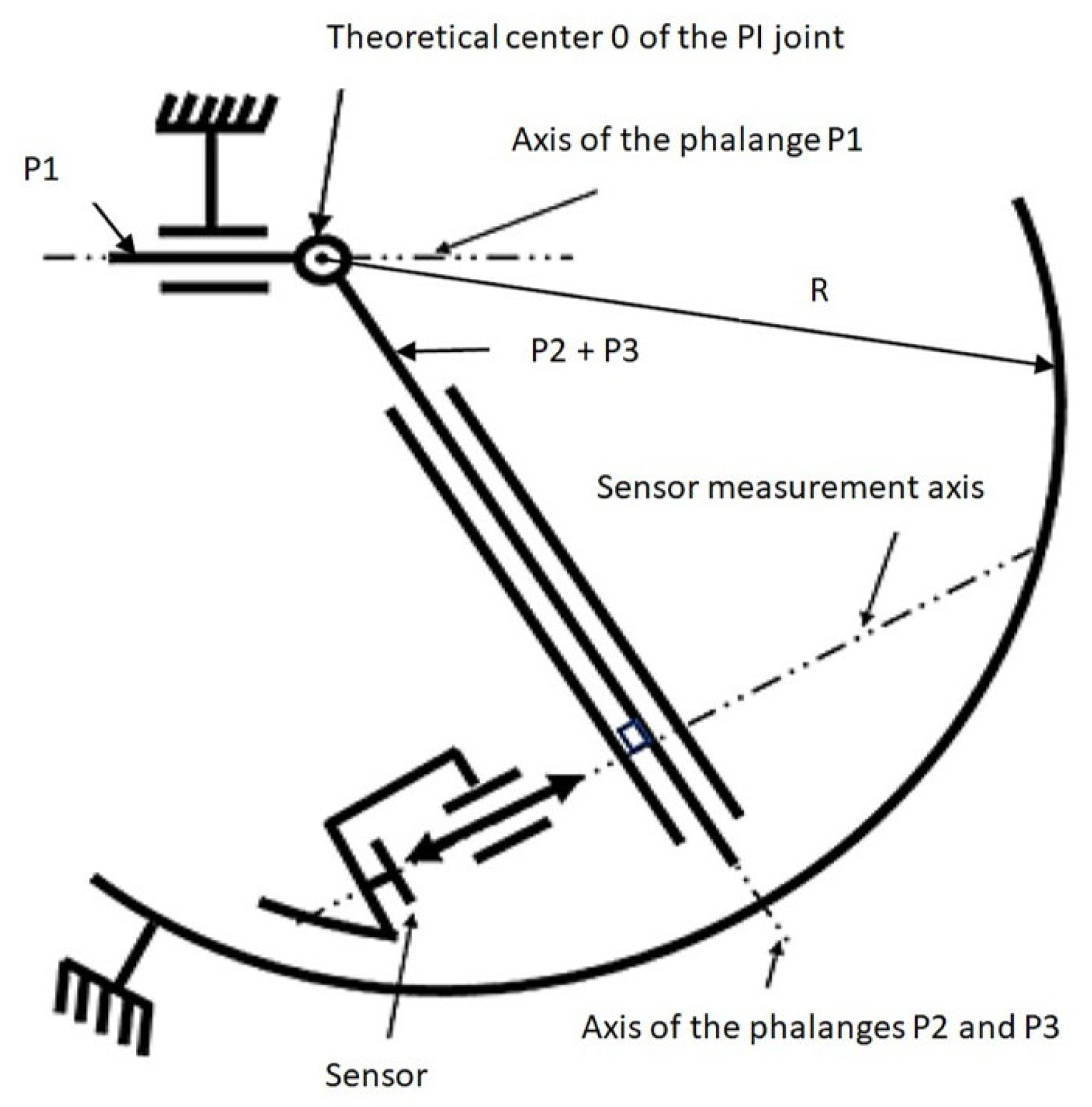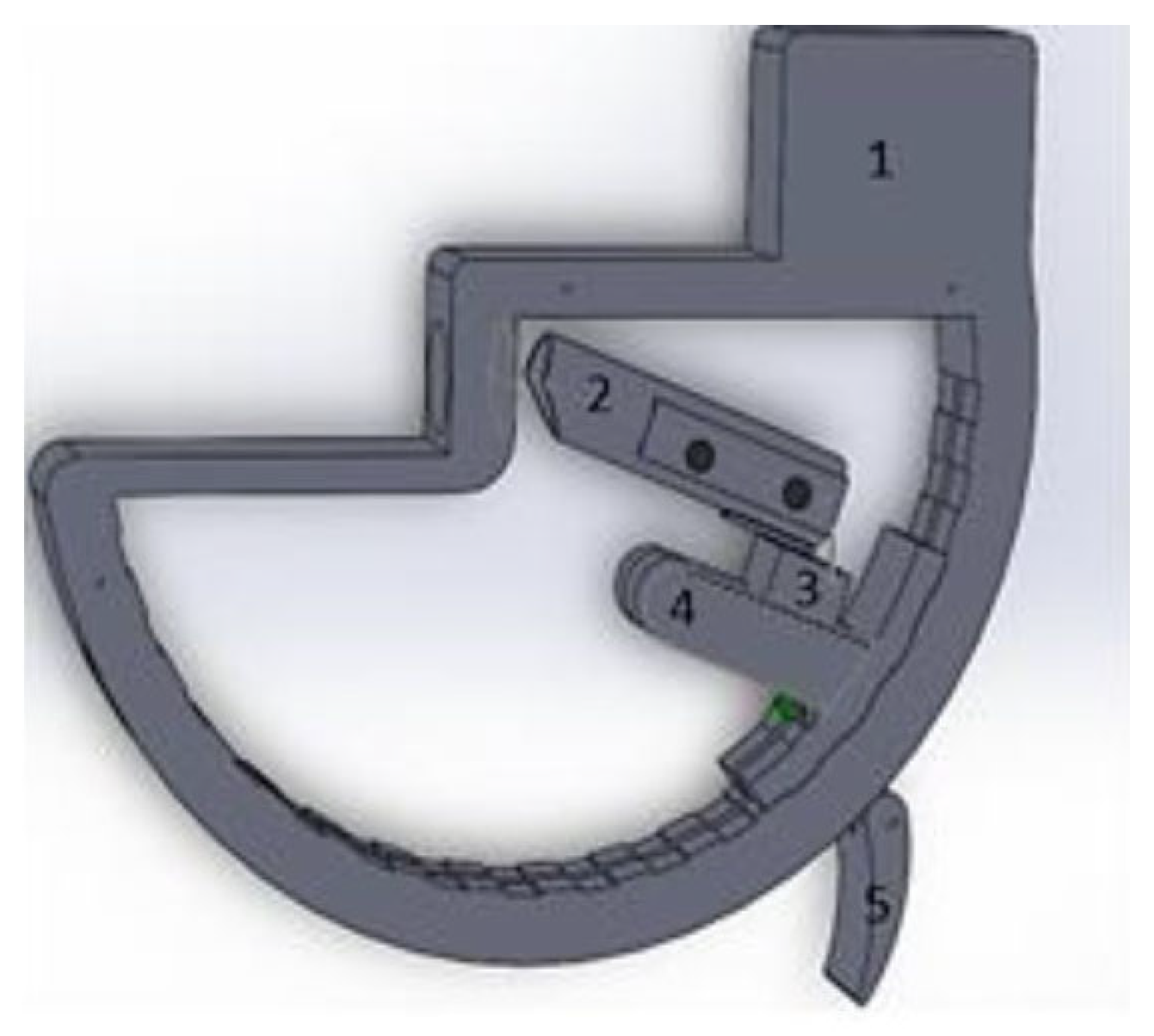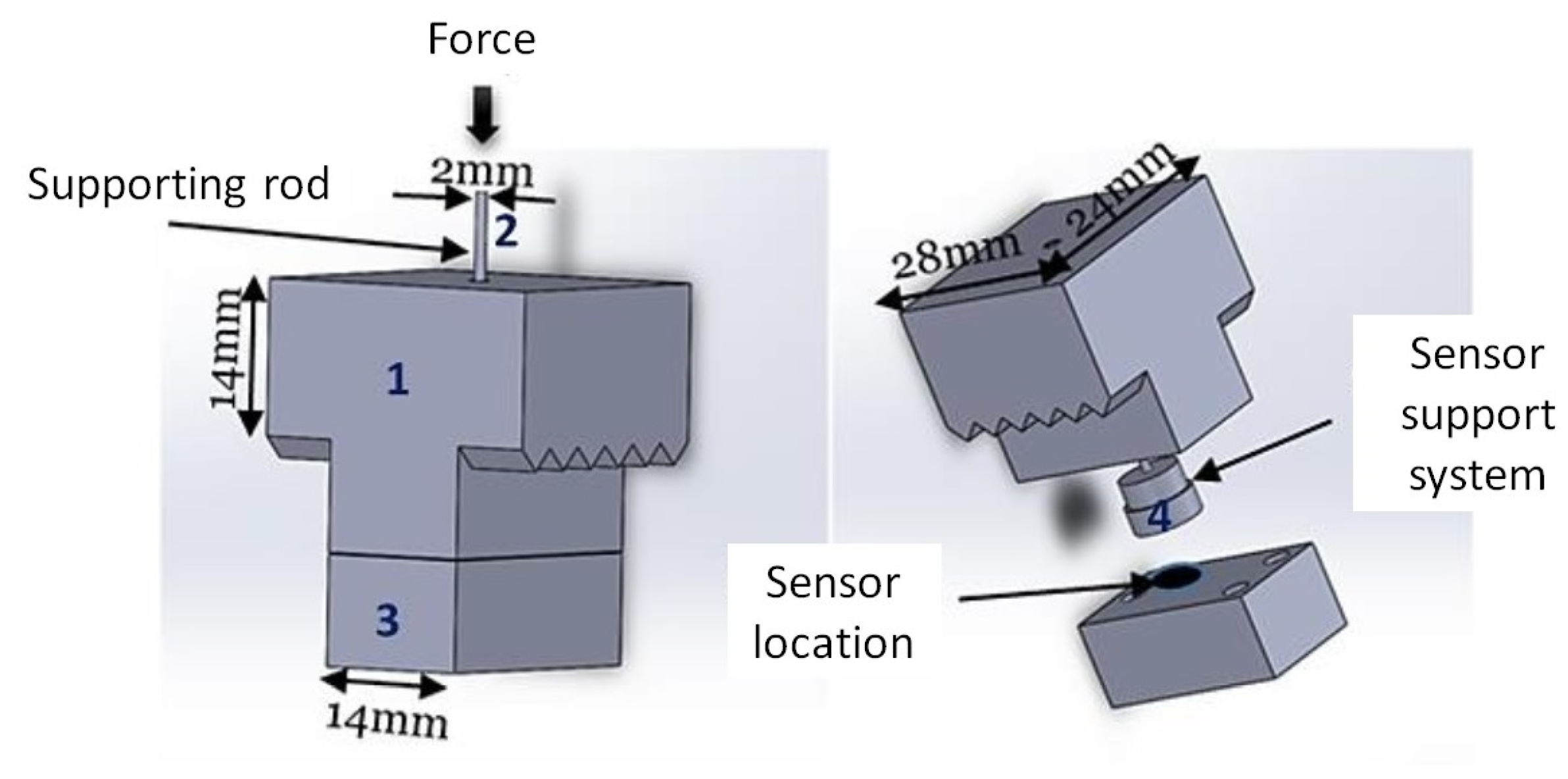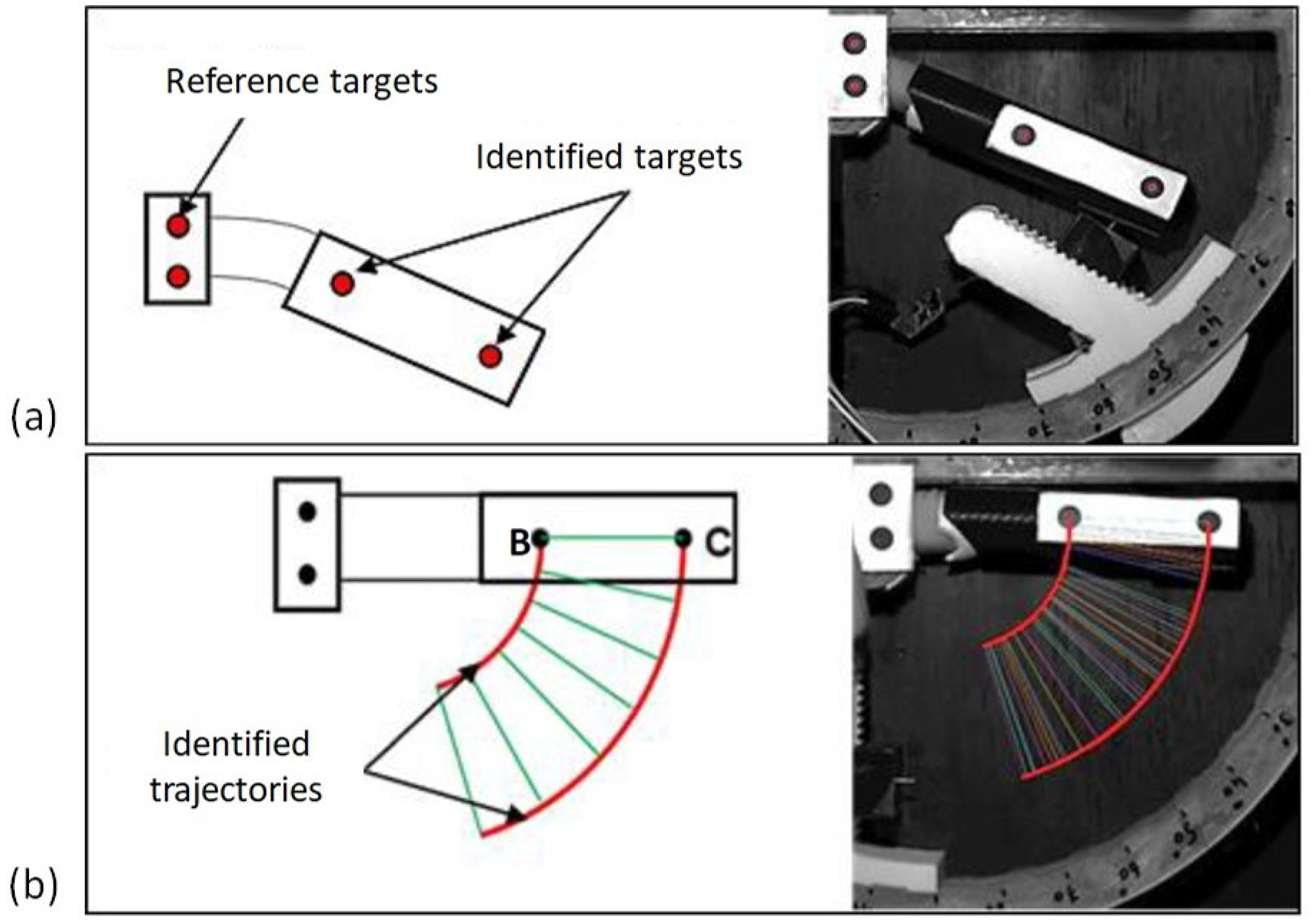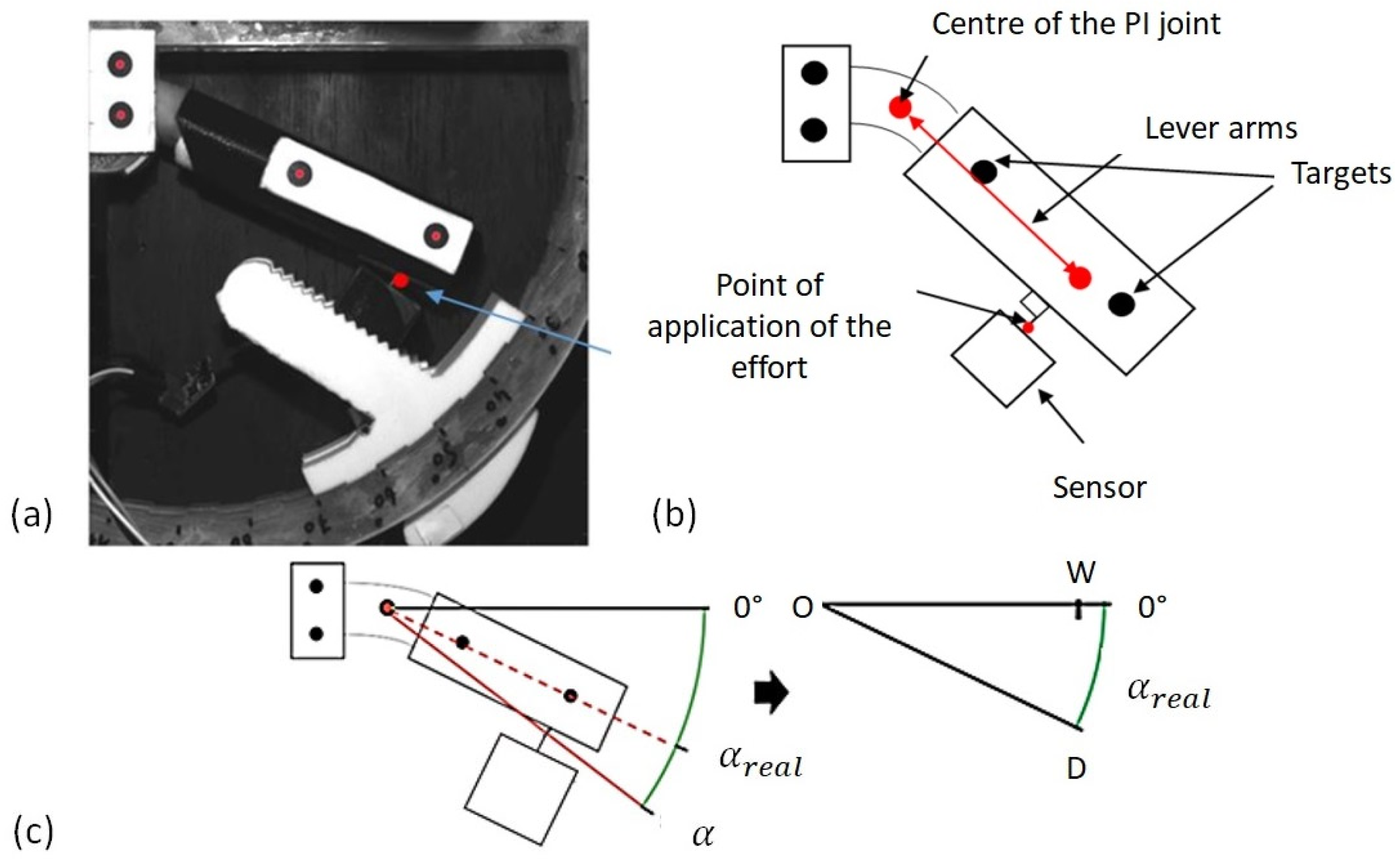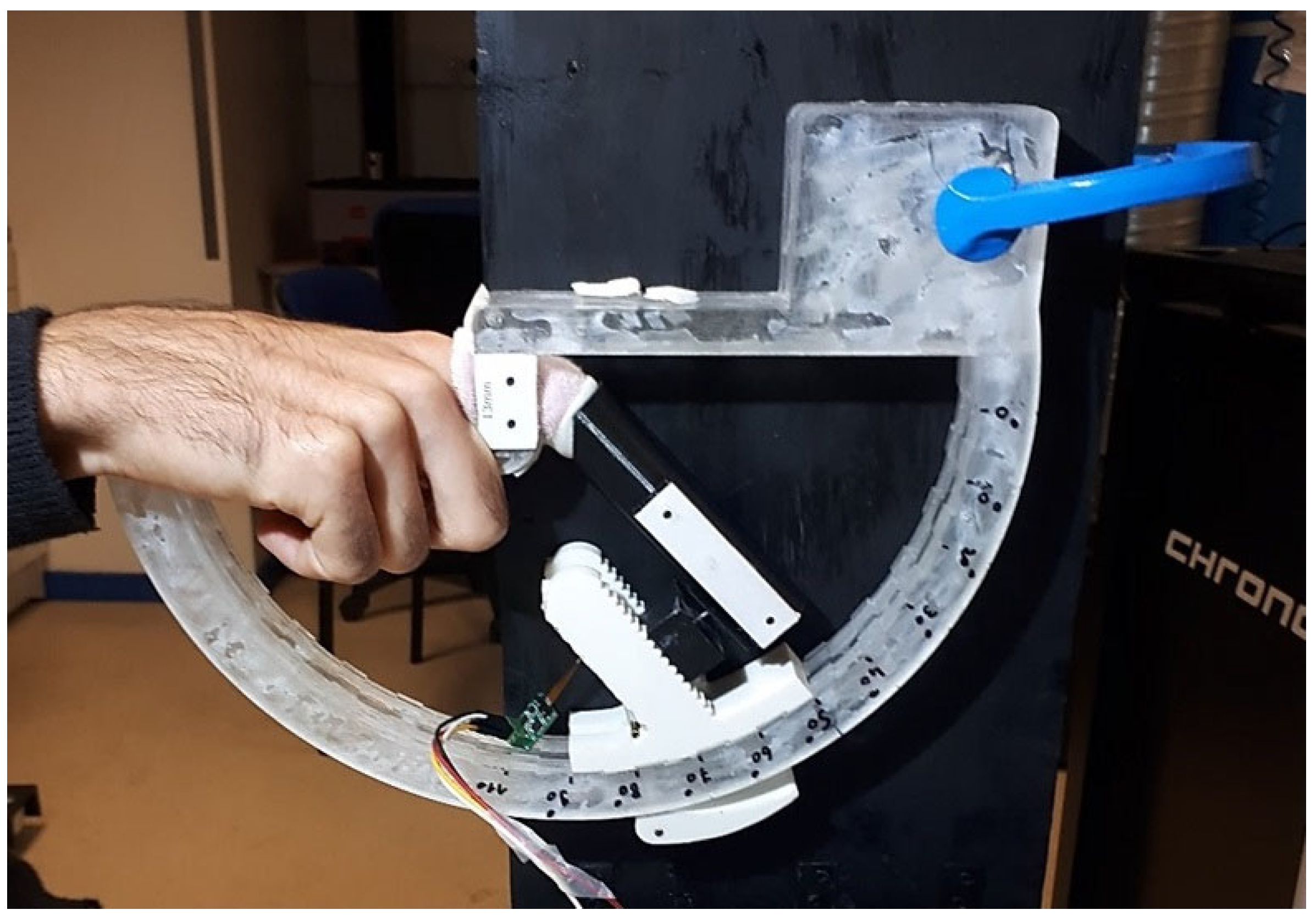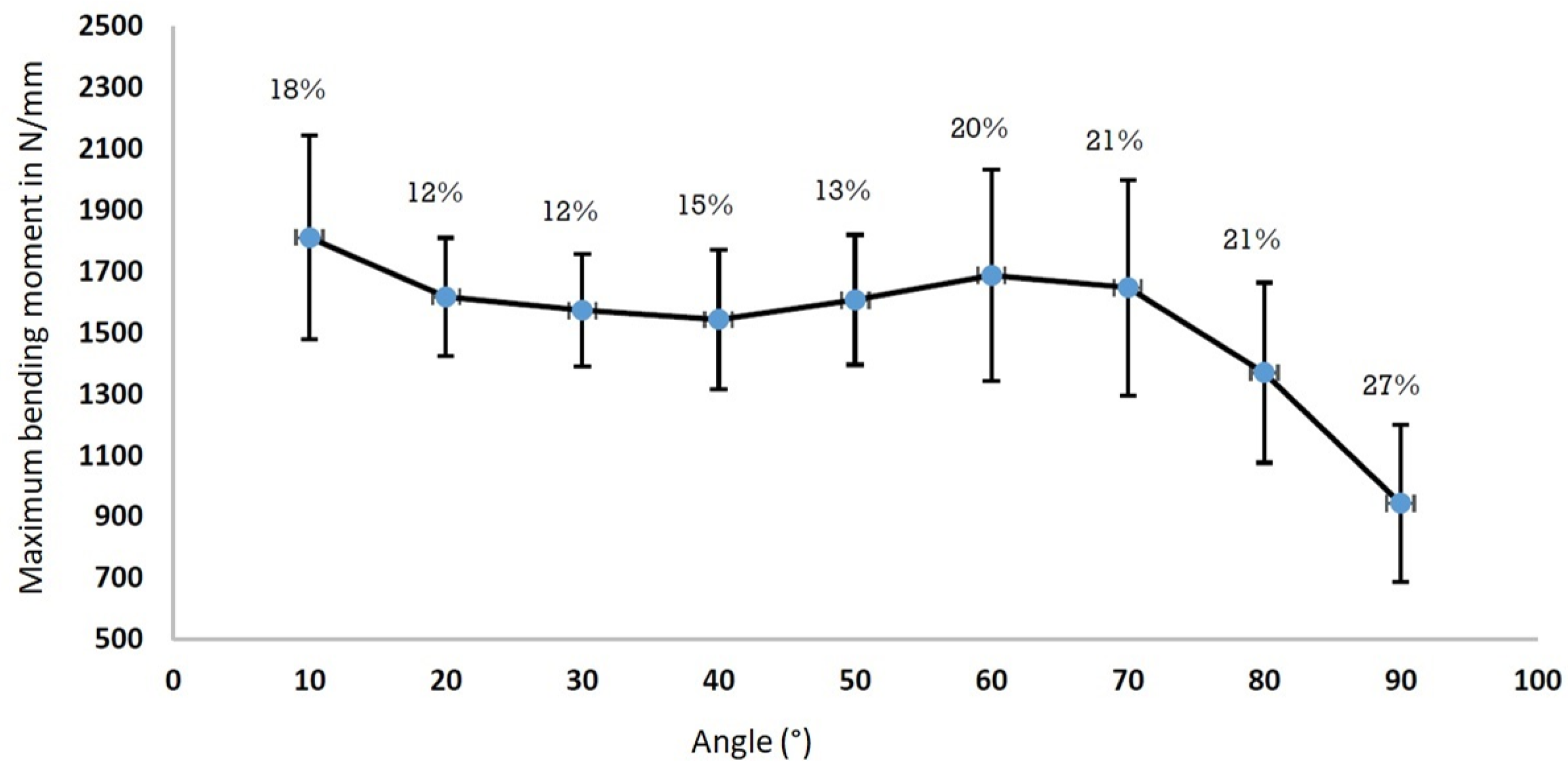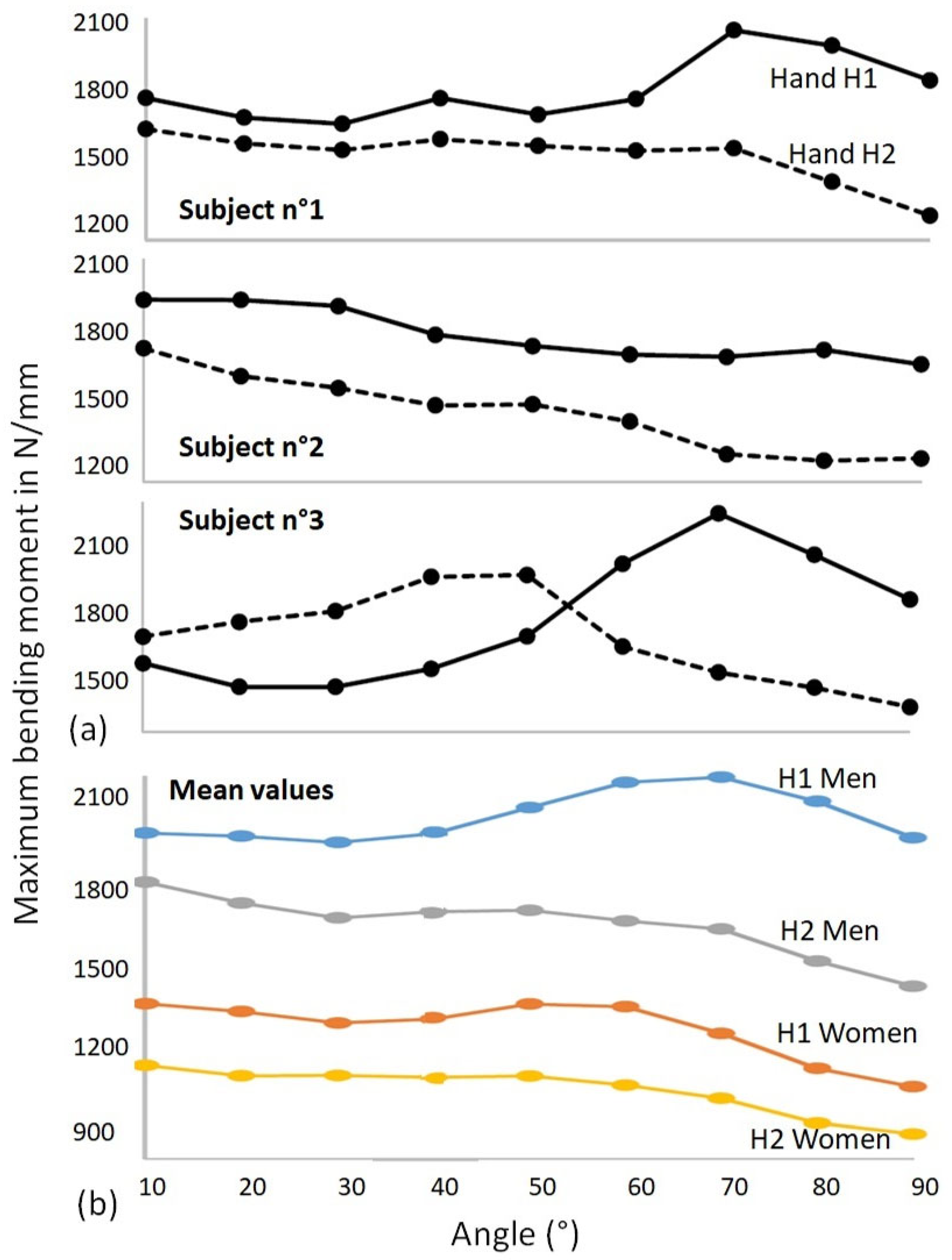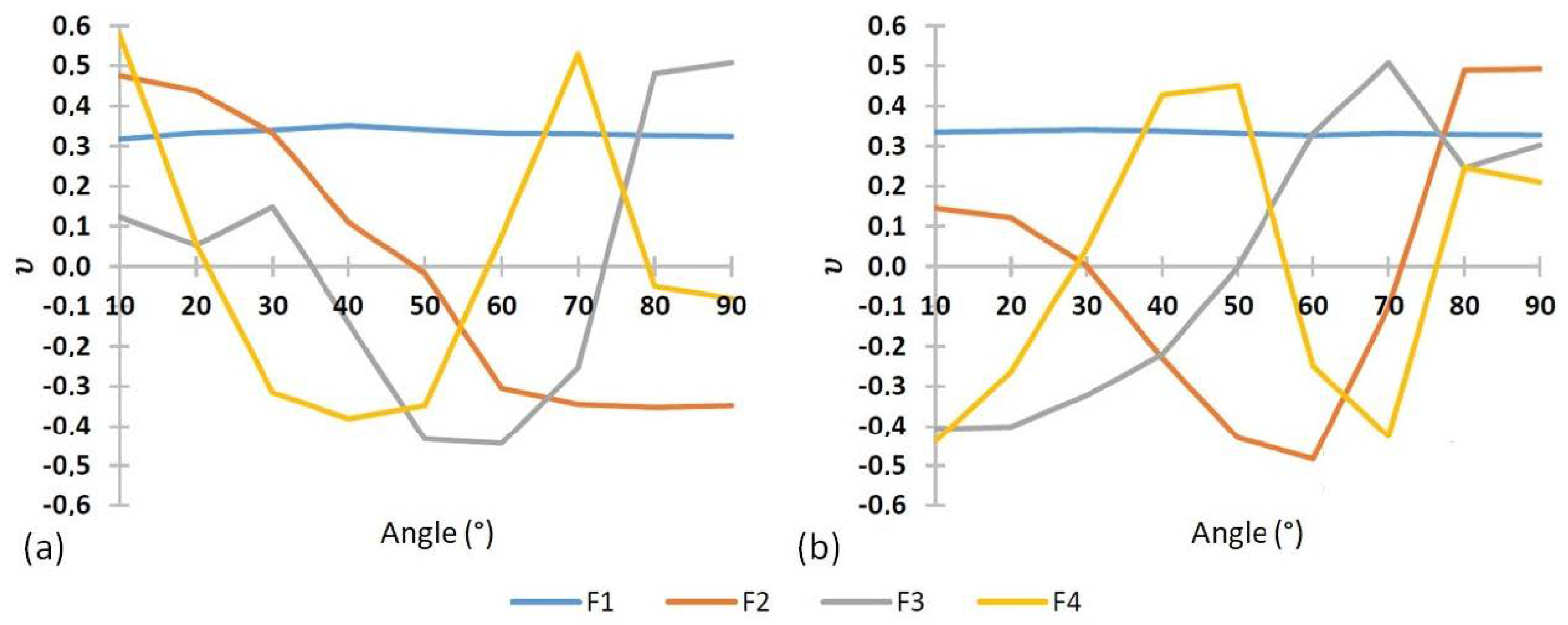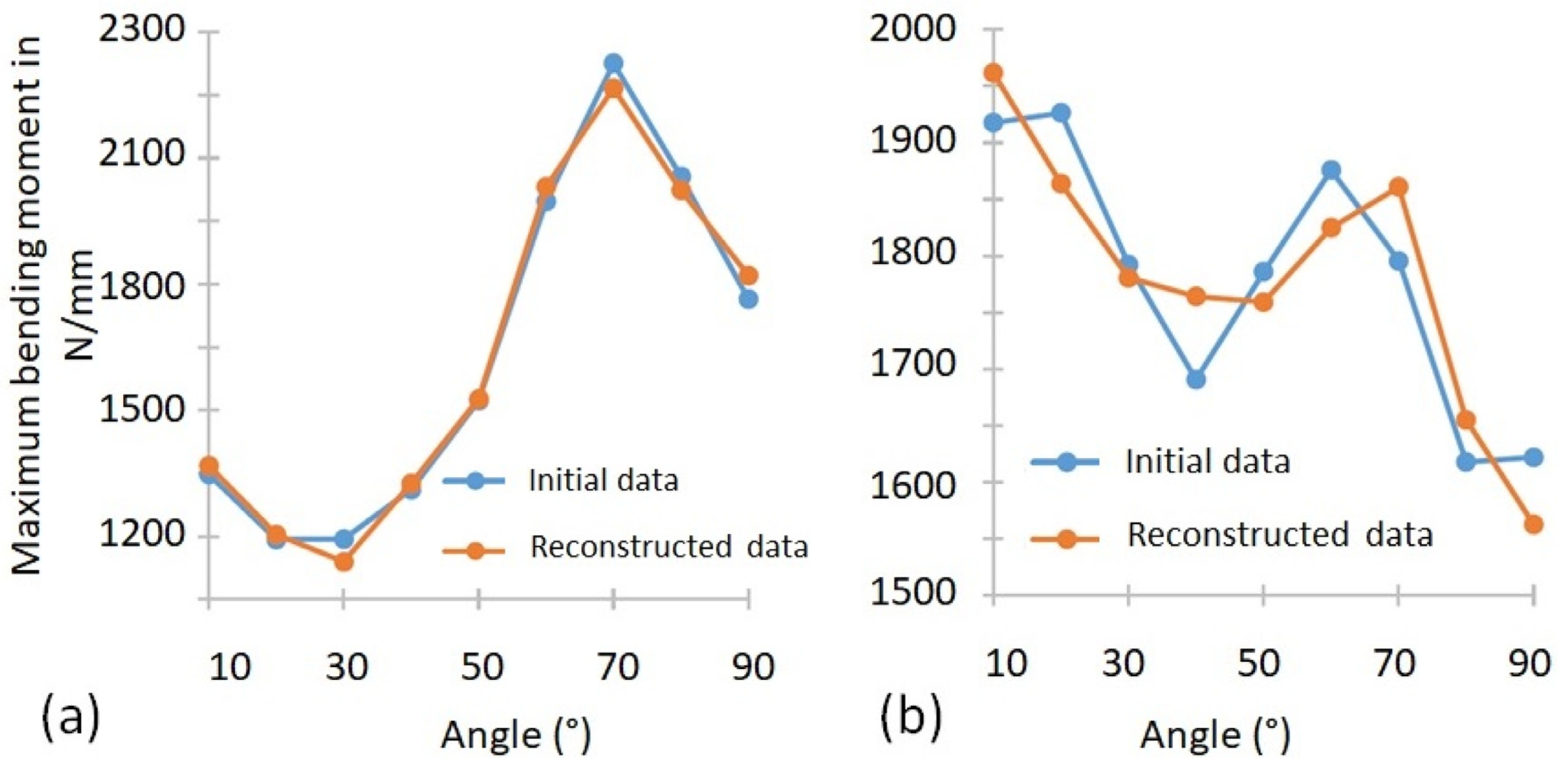The hand is the effector organ of the upper limb and is a complex tool with a large number of degrees of freedom. It has two main functions of great precision: grasping and tacting [
1]. It is composed of several series of small bones that form the carpus, metacarpus and phalanges. Each finger has three phalanges, except for the thumb, which has only two. The phalanges are named P1, P2 and P3 in the proximal to distal direction. The phalanges are connected to each other by movable joints, controlled by long tendons that form the end of the arm muscles. The joints of the hand include: the carpometacarpal joints, the metacarpalphalangeal joints and the interphalangeal joints. These joints link the phalanges of the hand together. The index, middle, little and ring fingers each have two joints: the proximal interphalangeal (PI) and distal interphalangeal joints. Only one degree of freedom (flexion/extension) is allowed for these joints, which permits the hand to be closed and a grip to be made.
The movements of the hand are the result of a balance between a set of agonistic and antagonistic and extrinsic and intrinsic muscles. The extrinsic muscles, located in the forearm, transmit movement to the hands and fingers via long tendons that run either along the palm (flexor tendons) or along the back of the hand (extensor tendons). The intrinsic muscles, located in the hand, transmit the precise movements of the fingers. The interosseous muscles are distinguished according to their location, dorsal (back of the hand) or palmar (palm), and allow the fingers to be moved apart and together respectively. The lumbar muscles, present between each of the five fingers, participate in flexion and extension, while the thenar muscles are used to move the thumb and the hypothenar muscles to move the little finger. All of these muscles and tendons generate bending forces in the fingers.
The measurements of the forces generated in the joints are important data for many applications: the understanding of pathologies; the optimisation of treatments, for example, for ageing [
2]; the design of ortheses and prostheses; the reproduction of movements or the understanding of gestures; the impact on blood circulation [
3]; the creation of bionic hands [
4], or the development of an exoskeleton [
5]. The knowledge of the moment in the joint is the first step towards the estimation of the tensions on the tendons that cross this joint. In this context, several devices have been developed to provide the necessary information in terms of force and bending moment. The first means and results of measurements are available in the synthesis article [
6]. Some features can be further detailed. The flexible hand glove, for example, is considered a good model for the kinematic analysis of finger joints [
7], allowing for the determination of the position as well as the bending angle of each finger joint by means of (flexible) bending sensors located at the joints. Recently, gloves have been instrumented to measure the force in hands in daily activities [
8]. There are various systems for measuring finger forces, but the majority of devices are designed to measure grip force [
9,
10] or pinch force [
11] in a single joint position. Dynamometers and hydraulic pressure gauges are the best known tools for measuring these forces. Therapists ultimately make the connection between grip force and neuromuscular power. However, these simple systems do not allow a precise link between the force developed by the joint and the angle of flexion of the same joint to be assessed [
11]. Different devices were developed. One was made to judge the extent of rehabilitation, which is important information for therapists to recover the initial state of the fingers. It consists of a cylindrical-type finger force measurement system with four force sensors. The system developed can measure the pinch force of each of the patient’s fingers. Other devices were designed to measure finger forces in different wrist movements: extension/flexion or adduction/abduction of the wrist [
12]. However, these devices are not able to accurately measure the force as well as the bending moment of the finger joints in each joint angle. A force measurement system called Dyna-8 [
13] was developed and used to determine hand and finger forces in model situations. It is equipped with transducers to measure grip force and finger forces. These devices do not take into account the bending angle, providing no information of the bending moment and limited data regarding the force measurements. Similarly, Kilgore et al. [
14] created an experimental device capable of simultaneously measuring the isometric moments generated in the metacarpophalangeal, proximal interphalangeal and distal interphalangeal joints of all four fingers. The device consists of four aluminium bars that are attached to each segment of the joints as well as the dorsal part of the hand and can be adapted to different hand sizes. The system is designed to act as a splint, allowing each joint to be positioned at different angles of flexion. However, the use of this device is limited for several reasons: it has a large mass (2.2 kg) and the forces of the straps holding the fingers disturb blood circulation, making the system uncomfortable for the user. A different idea based on a motorised hand exoskeleton was proposed [
15]. It was designed to be partially open at the fingers to allow the user to be in direct contact with the grasped object in order to preserve the natural haptic sensation. When manipulating an object, the contact force of the finger is estimated from the measurement made by a tactile capacitive force sensor of type FSR located at the inner surface of the finger part of the exoskeleton. The force determined is the gripping force. The influence of finger assembly on grip strength has recently been studied [
16]. Fingertip moments were also measured during gripping [
17]. The WFTS (Wrist Finger Torque Sensing) device measures the torque around the flexion axis of the wrist joint as well as the metacarpophalangeal joints of the fingers [
18], but there is often a problem with the alignment of the axes of the device and the fingers.
The work presented here is part of a general framework that aims to offer not only rigid or free movement orthoses to fit the patient but orthoses in which stiffness can be controlled. To achieve this objective, the first step is to be able to quantify the efforts that can be generated by each individual. The various devices created allow certain mechanical quantities to be measured, but they still have limitations. The objective here is to be able to measure maximum moments in all angular positions of the finger. Thus, the aim of this article is to propose a new device that meets this need and is also ergonomic and easy to use. A proposal for a new device is presented in
Section 2, in which the method of use, calibration and technical details are outlined. The system is then tested on 30 subjects, and the results are presented in
Section 3. These results are then analysed by principal component analysis and discussed in
Section 4.
